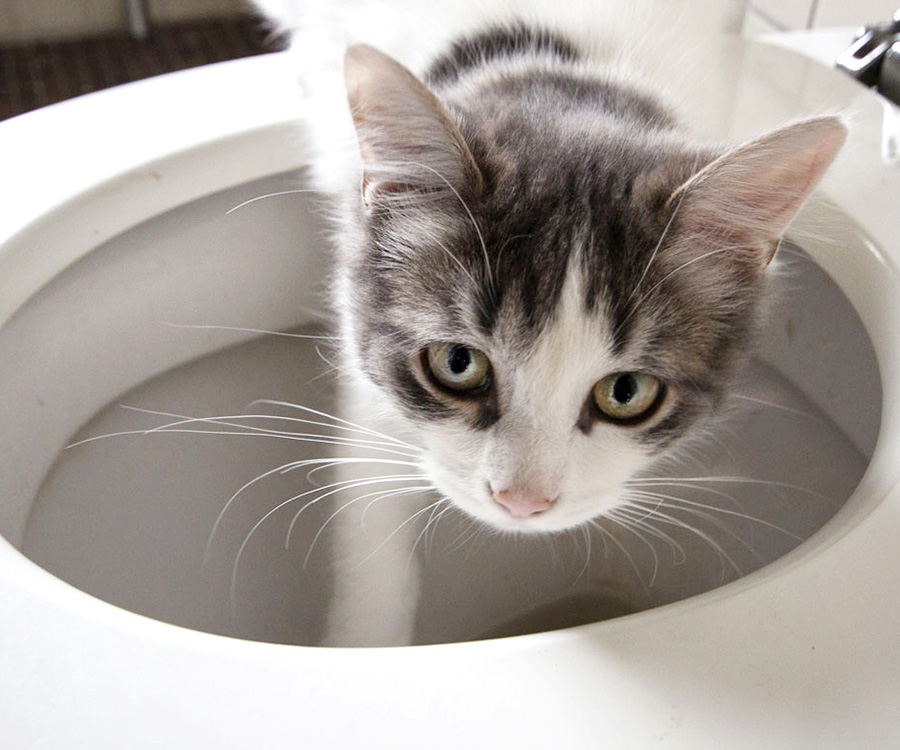How do you actually feel in regards to Can You Flush Cat Poo or Litter Down the Toilet??

Intro
As pet cat owners, it's necessary to be mindful of just how we take care of our feline good friends' waste. While it may appear hassle-free to flush cat poop down the bathroom, this practice can have detrimental repercussions for both the environment and human wellness.
Environmental Impact
Flushing pet cat poop introduces harmful virus and parasites right into the water system, posing a considerable risk to water ecological communities. These pollutants can adversely impact marine life and compromise water high quality.
Health Risks
In addition to ecological issues, purging pet cat waste can also position health and wellness threats to human beings. Cat feces may consist of Toxoplasma gondii, a bloodsucker that can cause toxoplasmosis-- a potentially serious health problem, specifically for pregnant women and individuals with damaged immune systems.
Alternatives to Flushing
Thankfully, there are much safer and a lot more liable means to deal with feline poop. Think about the adhering to choices:
1. Scoop and Dispose in Trash
One of the most typical technique of taking care of pet cat poop is to scoop it right into a biodegradable bag and throw it in the trash. Be sure to use a dedicated litter scoop and deal with the waste immediately.
2. Use Biodegradable Litter
Choose naturally degradable feline trash made from materials such as corn or wheat. These litters are environmentally friendly and can be safely dealt with in the trash.
3. Hide in the Yard
If you have a backyard, consider burying pet cat waste in a marked location far from vegetable gardens and water sources. Make certain to dig deep adequate to stop contamination of groundwater.
4. Set Up a Pet Waste Disposal System
Buy a pet dog garbage disposal system particularly developed for cat waste. These systems use enzymes to break down the waste, lowering smell and ecological effect.
Conclusion
Liable pet dog ownership expands past supplying food and shelter-- it also involves correct waste monitoring. By avoiding flushing pet cat poop down the commode and selecting different disposal techniques, we can reduce our ecological impact and shield human health and wellness.
Why Can’t I Flush Cat Poop?
It Spreads a Parasite
Cats are frequently infected with a parasite called toxoplasma gondii. The parasite causes an infection called toxoplasmosis. It is usually harmless to cats. The parasite only uses cat poop as a host for its eggs. Otherwise, the cat’s immune system usually keeps the infection at low enough levels to maintain its own health. But it does not stop the develop of eggs. These eggs are tiny and surprisingly tough. They may survive for a year before they begin to grow. But that’s the problem.
Our wastewater system is not designed to deal with toxoplasmosis eggs. Instead, most eggs will flush from your toilet into sewers and wastewater management plants. After the sewage is treated for many other harmful things in it, it is typically released into local rivers, lakes, or oceans. Here, the toxoplasmosis eggs can find new hosts, including starfish, crabs, otters, and many other wildlife. For many, this is a significant risk to their health. Toxoplasmosis can also end up infecting water sources that are important for agriculture, which means our deer, pigs, and sheep can get infected too.
Is There Risk to Humans?
There can be a risk to human life from flushing cat poop down the toilet. If you do so, the parasites from your cat’s poop can end up in shellfish, game animals, or livestock. If this meat is then served raw or undercooked, the people who eat it can get sick.
In fact, according to the CDC, 40 million people in the United States are infected with toxoplasma gondii. They get it from exposure to infected seafood, or from some kind of cat poop contamination, like drinking from a stream that is contaminated or touching anything that has come into contact with cat poop. That includes just cleaning a cat litter box.
Most people who get infected with these parasites will not develop any symptoms. However, for pregnant women or for those with compromised immune systems, the parasite can cause severe health problems.
How to Handle Cat Poop
The best way to handle cat poop is actually to clean the box more often. The eggs that the parasite sheds will not become active until one to five days after the cat poops. That means that if you clean daily, you’re much less likely to come into direct contact with infectious eggs.
That said, always dispose of cat poop in the garbage and not down the toilet. Wash your hands before and after you clean the litter box, and bring the bag of poop right outside to your garbage bins.
https://trenchlesssolutionsusa.com/why-cant-i-flush-cat-poop/

We had been shown that report about Don’t flush cat feces down the toilet from an associate on our other web blog. Are you aware of somebody who is truly interested in the niche? Feel free to share it. We thank you for reading our article about Don’t flush cat feces down the toilet.
Learn More
Comments on “Potential Risks of Flushing Cat Poop Down Your Toilet - Advice for Safer Disposal”